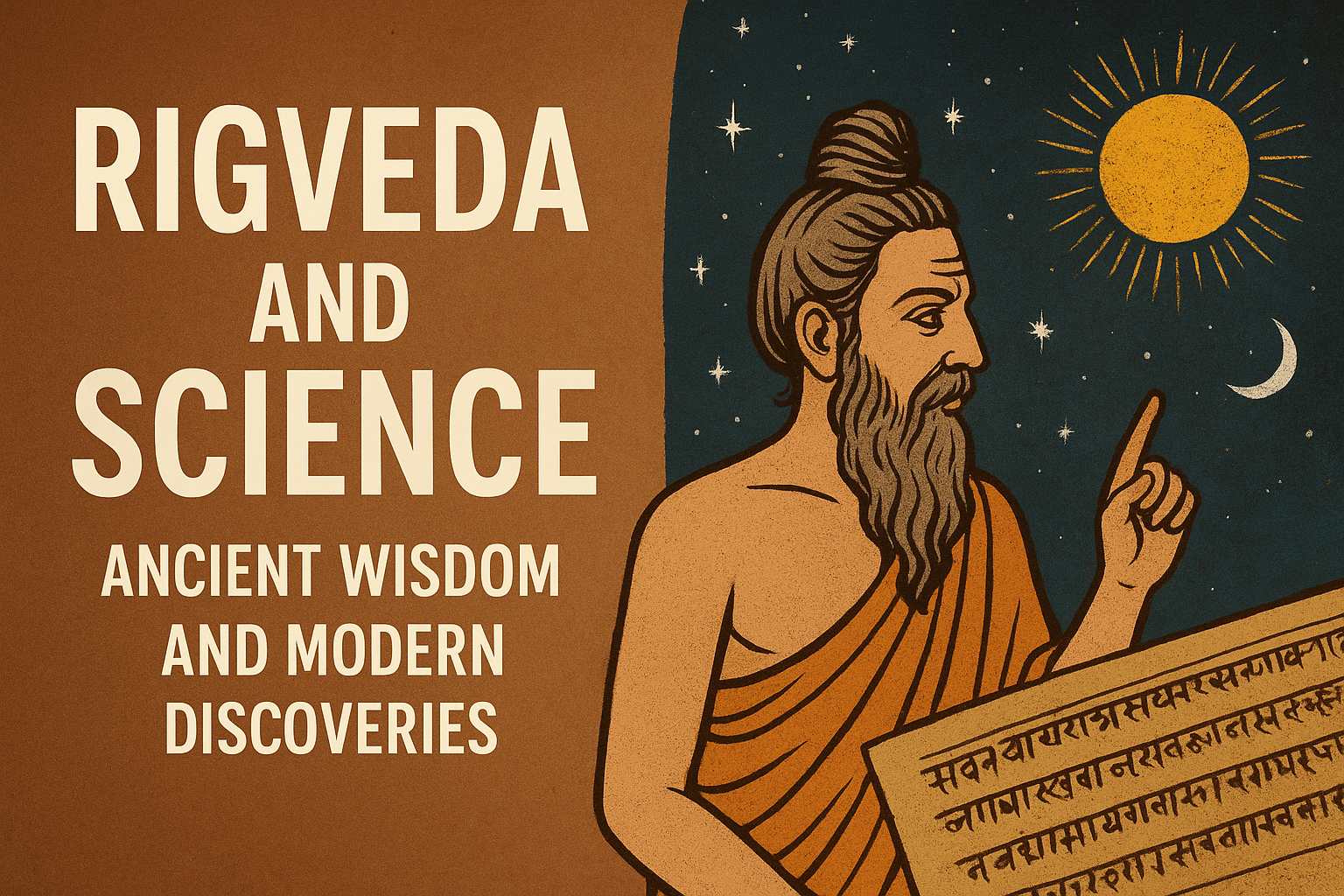
The Rigveda, composed thousands of years ago, is the oldest of the four Vedas. Written in Vedic Sanskrit, it consists of over one thousand hymns addressed to natural forces like the sun, fire, water, wind, and sky. For many, it is a religious text. Yet, for historians and scholars, it is also a treasure of early human thought. The Rigveda does not present science in the modern sense of laboratories and experiments, but it does contain ideas and observations about nature, the universe, and human life that can be studied in a scientific light.
The Universe and Creation
One of the most striking hymns in the Rigveda is the “Nasadiya Sukta,” often called the Hymn of Creation. It reflects on how the universe might have begun. The hymn speaks of a time when there was neither existence nor non-existence, neither day nor night. It suggests that the universe may have arisen from a state of nothingness, and it even questions whether anyone, even the gods, knows the truth of creation.
This curiosity resembles the modern scientific approach. Today, scientists talk about the Big Bang as the origin of the universe. While the Rigveda does not describe such an event in technical detail, it shows that ancient thinkers were asking similar fundamental questions: How did the universe begin? What existed before creation?
Elements of Nature
The Rigveda treats natural forces as divine powers but also acknowledges their roles in maintaining balance. Agni (fire), Vayu (air), Surya (sun), and Varuna (water and cosmic order) are central figures in the hymns. These descriptions may appear religious, but they also highlight an understanding of the natural elements without which life cannot exist.
Modern science now confirms the same truth: energy from the sun, water cycles, and the role of air and fire (energy transformation) are essential for survival. While the Rigveda explains these forces in symbolic language, it shows that early humans recognized their importance.
Astronomy in the Rigveda
Several hymns in the Rigveda mention the movement of the sun, moon, and stars. The rising and setting of the sun, the changing of seasons, and the cycle of day and night are observed in poetic form. The hymns refer to the sun as the source of light and life. The concept of the year, divided by solar movement, is also described.
Though the Rigveda does not contain mathematical models like modern astronomy, it reflects careful observation of the sky. Later Indian texts such as the Surya Siddhanta built on these early ideas to develop more technical systems of astronomy.
Water and the Environment
Water is given great importance in the Rigveda. The hymns praise rivers and rain as sources of life. They recognize water as purifying and nourishing. Modern science too confirms that water is central to ecosystems, agriculture, and human health. The cycle of rainfall, described as a gift from the gods, parallels the modern understanding of the water cycle involving evaporation, condensation, and precipitation.
Health and Healing
Although Ayurveda developed later, some seeds of medicinal thought can be traced back to the Rigveda. It mentions herbs and healing chants. Hymns speak of plants as life-giving and protective. This shows that Vedic people recognized the link between natural resources and health. Modern medicine relies on similar principles, with many drugs derived from plants.
Rigveda and Modern Science: Connections and Differences
It is tempting to say that the Rigveda predicted modern science. However, this would be an oversimplification. Modern science is based on systematic observation, measurement, testing, and verification. The Rigveda, on the other hand, expresses insights in the form of poetry, myth, and symbolism.
For example:
- The Rigveda speaks of the sun as the life force. Modern science agrees but explains it in terms of nuclear fusion and solar radiation.
- The hymns describe water as purifying and divine. Modern science explains water’s chemical structure, its role in hydration, and its physical cycles.
- The “Hymn of Creation” raises questions about the origin of the universe. Modern science addresses similar questions through cosmology and physics.
Thus, the connection is not direct prediction but a similarity in curiosity. Ancient seers and modern scientists both wanted to understand the world. Their methods, however, were very different.
The Spirit of Inquiry
What makes the Rigveda truly significant is its spirit of inquiry. It does not simply give answers but raises profound questions. The Nasadiya Sukta even admits that no one may know how creation happened. This humility is close to the scientific attitude, where each discovery leads to new questions.
Modern science differs because it demands evidence and repeatable results. The Rigveda relies on intuition, observation, and spiritual thought. Yet both traditions share the desire to explore truth.
Final Take
The Rigveda is not a science textbook, but it is a remarkable record of early human thinking about the universe and life. Its hymns reflect deep respect for nature and a willingness to question existence itself. While modern science has advanced far beyond poetic descriptions, the Rigveda shows that the roots of curiosity and wonder are ancient.
For a student of today, the lesson from the Rigveda is clear. Respect nature, ask questions, and remain open to the unknown. Science, in its modern form, continues the journey that began with the same wonder that inspired the seers of the Vedic age.





















